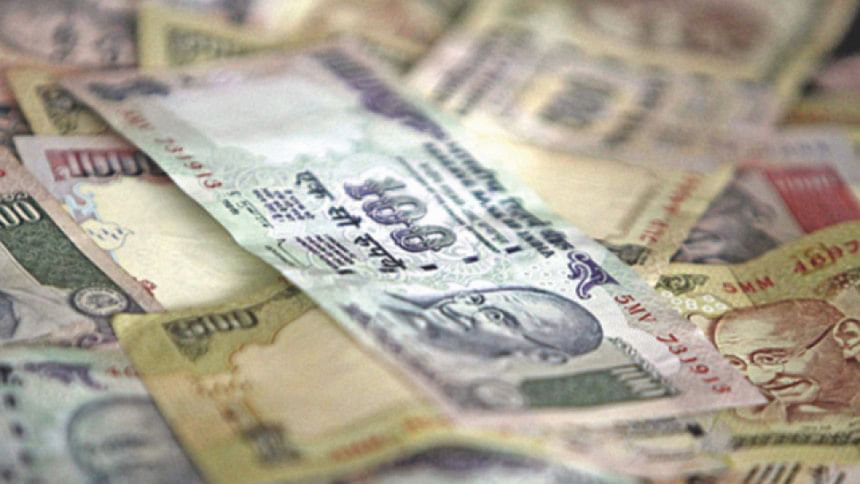Trade in rupee had a lofty aim. But data paints a different picture

Bangladesh and India on July 11 rolled out the cross-border trade settlement in the rupee to cut the dependence on the US dollar, but transaction figures illustrate a dearth of interest in carrying out businesses in the Indian currency.
Subsequently, five banks -- Sonali Bank, Eastern Bank, State Bank of India (SBI), Standard Chartered Bangladesh (SCB), and Islami Bank Bangladesh PLC -- received approval from the Bangladesh Bank to perform bilateral trade with the neighbouring country using its currency.
Under the mechanism, Indian exports and imports with Bangladesh amounting to about $16 billion can be invoiced, paid for, and settled in the rupee.
But between July 11 and December 26, only two banks -- Eastern Bank and SCB – settled export and import trades worth 3.51 million rupees.
In October, the Dhaka office of the SBI opened a letter of credit (LC) of 147,000 rupees for Navana Welding Electrode Ltd, BB data showed.
A month earlier, Eastern Bank celebrated the first successful trade settlement in the Indian currency.
Habiganj Agro Ltd, a concern of Pran-RFL Group, was the beneficiary of the import and export settlement involving about 2.4 million rupees. Of the sum, imports accounted for 1.31 million rupees.
Since then, the bank has not made any further transactions in the rupee.
Bankers say the lack of interest in using the Indian currency in bilateral trade was due to a high demand for US dollars, a dearth of rupee earnings and a lack of competitiveness.
Ahmed Shaheen, additional managing director of Eastern Bank, said bilateral trade in the Indian rupee had just started and it had huge potential.
Some exporters are discussing to settle trades in the rupee through the private commercial bank, he said.
However, another senior official of the bank, seeking anonymity, said there is a challenge to trade in the rupee because exporters demand US dollars due to its competitive edge.
"Importers want to buy products using the rupee. But they have no earnings in the currency."
SCB received an inflow of 1.07 million rupees thanks to exports by Walton Hi-Tech Industries PLC.
Naser Ezaz Bijoy, chief executive officer of SCB, told The Daily Star that the demand for the US dollar was very high and that every exporter wanted to ship products using American greenback.
"Local traders will be able to finance imports through the rupee when they have earnings in the same currency," he said, adding that Bangladesh was trying to secure rupee-linked loans from India to boost the two-way commerce.
The trade is being done through the lenders' nostro accounts, which are essentially bank accounts held in another country by domestic banks and denominated in the currency of the overseas country.
Bangladeshi exporters are receiving their proceeds in rupees in those accounts and that balance is being used to pay for imports from India.
In short, import bills equivalent to export proceeds can be settled under the mechanism. The exchange rate used is market-determined.
A senior official of the central bank says similar applications are being scrutinised by six more banks: Trust Bank, Social Islami Bank, AB Bank, NCC Bank, Prime Bank, and Premier Bank.
Industry insiders say cutting reliance on the US dollar is not possible at present since around 90 percent of foreign trade is conducted through the global currency. Although the use of other currencies continues to rise, the growth is not fast.
"The US dollar is considered the most sustainable foreign currency in overseas trade," said Mirza Elias Uddin Ahmed, managing director of Jamuna Bank, recently.
Unlike the US dollar, the value of other foreign currencies can fluctuate very quickly against the local currency. Therefore, the US dollar is the most trusted currency, he said.
This is not only the case for Bangladesh.
The oil ministry told a parliamentary standing committee that it had not found any takers to pay for the import of crude oil in the rupee as suppliers expressed concerns about the repatriation of funds and high transactional costs, according to the Press Trust of India.
In a bid to internationalise the Indian currency, the Reserve Bank of India on July 11, 2022, allowed importers to pay with the rupee and exporters to receive proceeds in the currency.

 For all latest news, follow The Daily Star's Google News channel.
For all latest news, follow The Daily Star's Google News channel. 




Comments